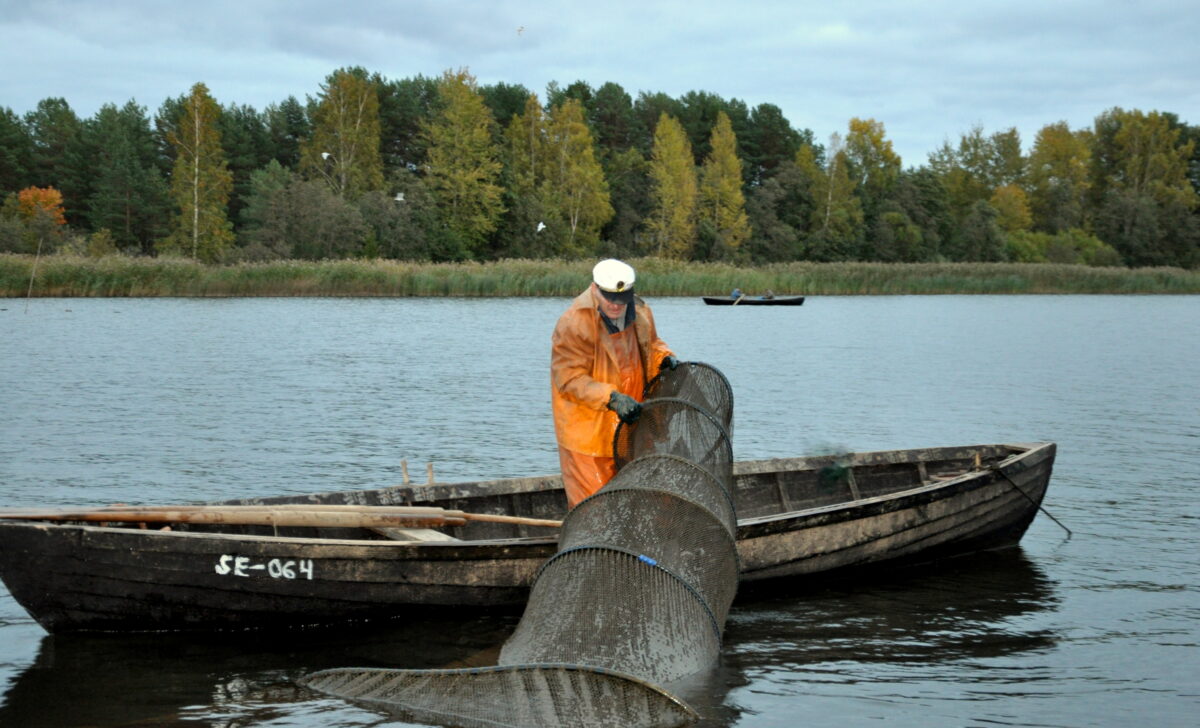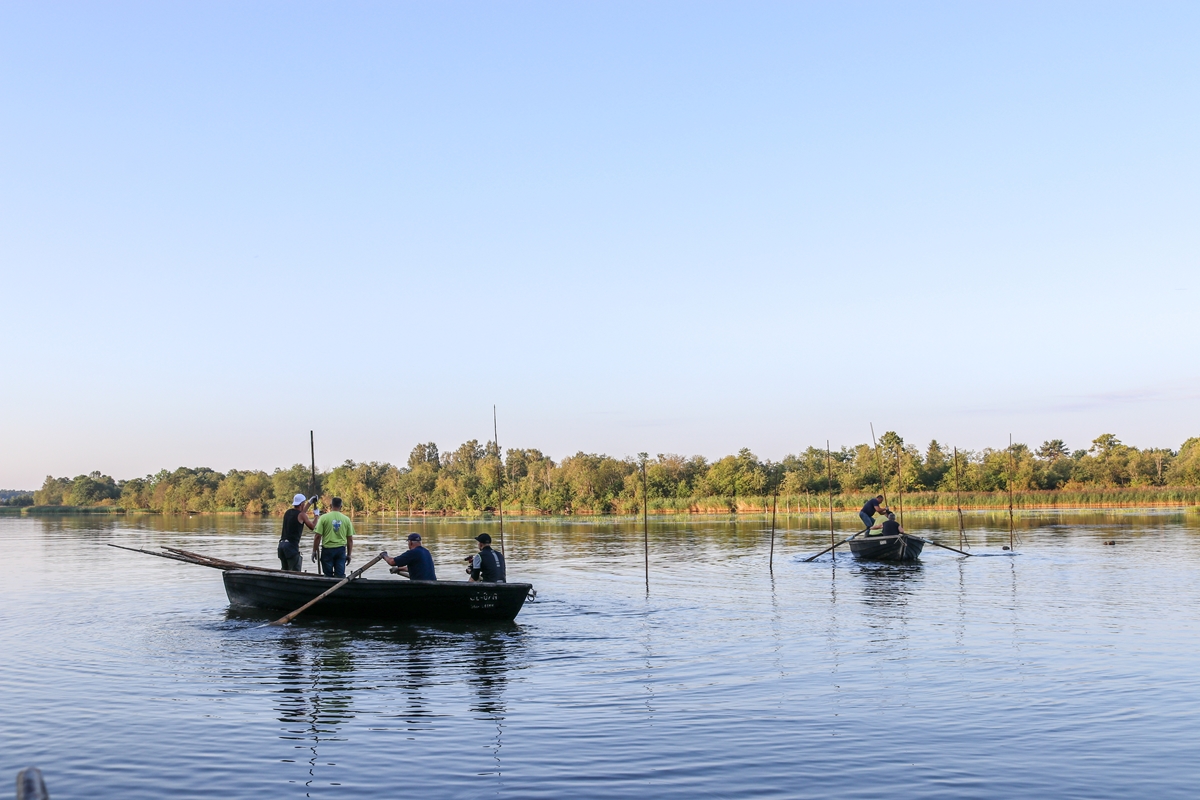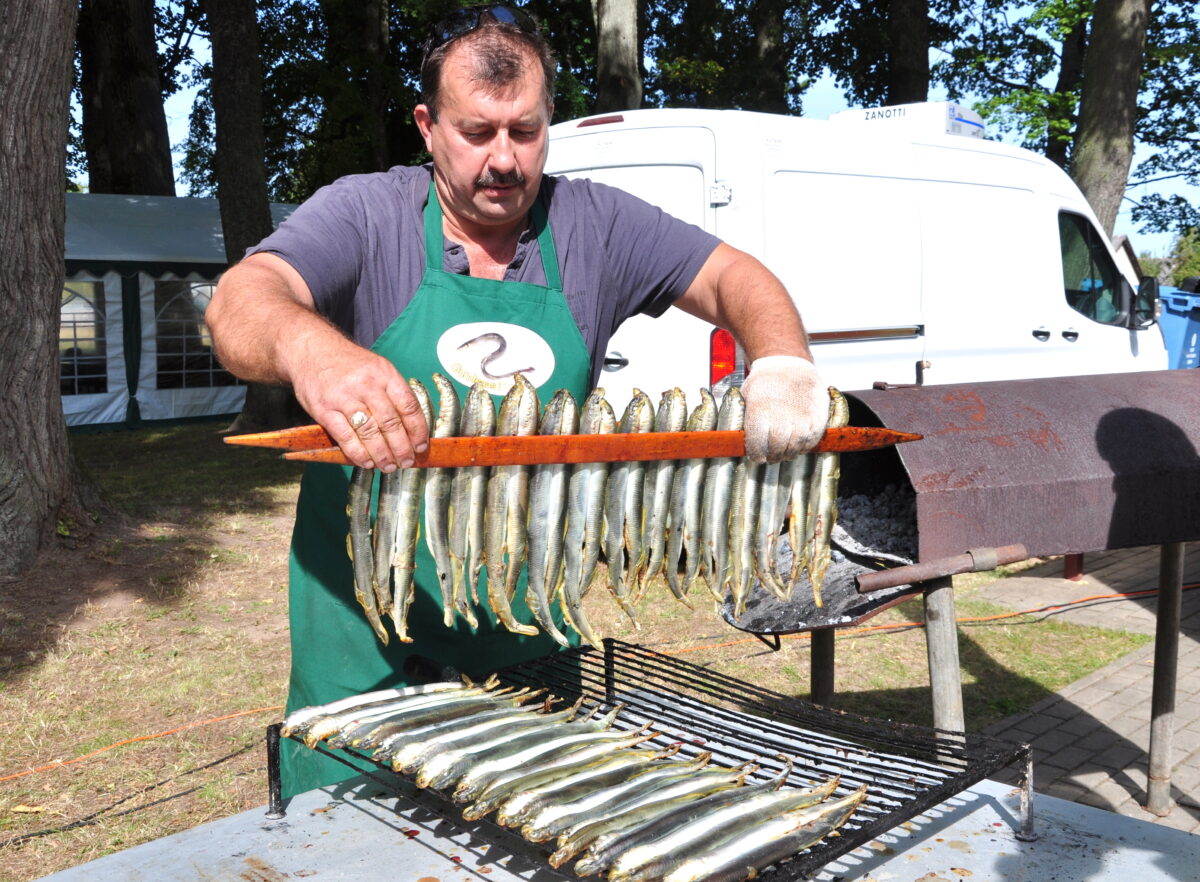Carnikava has been considered the “lamprey capital” of Latvia since at least the beginning of the 20th century. Lamprey fishing has been one of the main occupations of the inhabitants of the area for centuries. This has allowed the development of local fishing traditions, specific fishing-related vocabulary and beliefs, and traditions of lamprey processing and cooking.
In 2009, the State Heraldic Commission approved the coat of arms of the municipality of Carnikava with the image of a lamprey. In 2015, Carnikava lamprey was entered in the European Union’s register of “Protected Geographical Indications” (PGI Carnikavas nēģi). According to the application for such a registration, lamprey fishing is still based on “age-old traditions passed down from generation to generation regarding optimum fishing spots, the habits of lampreys and the influence of weather conditions on their behavior”. This registration means the attribution of EU label and an exclusive right to the use of the name „Carnikavas nēģi” for “river lampreys (Lampetra fluviatilis) caught in a specific region – the river Gauja in Carnikava municipality – and during a specific time period (from 1 August to 1 February)”, both fresh lampreys and cooked lampreys in aspic (European Council 2014). It became the first such registered protected geographical indication from Latvia.
In 2019, lamprey fishing and preparation skills in Carnikava were included in the list of Latvia’s intangible cultural heritage (Nemateriālais kultūras mantojums). Therefore, we can say that lamprey fishing is seen as a place-based tourist attraction and that lampreys are a culinary delicacy in the context of gastronomic heritage.
Since 2001, an annual lamprey festival has been held in August to celebrate the start of the lamprey fishing season. The festival includes an artisans’ market, a procession, sports activities, a boat parade, a concert, a lamprey fast-eating competition, and the boiling of Carnikava’s lamprey soup in a 400-litre pot. Thus, keeping the tradition alive. Tourist companies organise ‘lamprey trips’, the most active fishermen run ‘Lamprey lessons’ at the Local History Centre to introduce the tradition and inform about problems. Lamprey tastings are also available. Fishermen also go on exchange trips to Scandinavian countries and elsewhere to educate the local communities and local authorities here.
As can be guessed, the tradition of the river lamprey fishery is directly related to the specific life cycle and population sustainability of this agnatid. In addition to various anthropogenic and environmental factors, the life cycle and sustainability of the lamprey population are affected (or could potentially be affected) by climate change due to rising freshwater temperatures; changing freeze/thaw cycles; loss of seasonal sea ice; changes in the distribution and behavior of animal species; and, finally, rising air temperatures. In addition, there is the question of whether lamprey fishers will also be able to adapt to the changes to which lampreys are likely to adapt. They claim, in fact, that the seasons have completely changed and natural processes have altered.
The community also raises the issue of declining catches, disruption to the fishing process because of climate change as it affects their business and profits. Also, when artificially reared juvenile lampreys are released back into the river, fishermen are involved in the process because it is important to them that the juveniles are released as successfully as possible so that the overall population does not decline.
It should be pointed out that the industrial fishing of lamprey is regulated at the national level, in response to limited fish resources and for securing their sustainability. These regulations are revised and amended according to the needs identified through scientific monitoring of fish resources. Therefore, although industrial fishing regulations do not directly address the impact of CC, their eventual amendments can be grounded in data and considerations that reflect such present or future impact.
As for national policies with regard to global CC, it has been the responsibility of the Ministry of Environmental Protection and Regional Development to advance policy-making and implementation in this field. Recently, this competence is being gradually taken over by the newly established Ministry of Climate and Energy, a process still in transition. The National plan on the adaptation of Latvia to climate change till 2030 has been developed and adopted by a decree of the Cabinet of Ministers in 2019. Risks to fisheries caused by climate change are stated therein, research-based monitoring of fish resources planned, and financial instruments for adaptation are envisaged. Special funding is planned for municipalities to adapt to CC, with funding planned to start with the year 2024 (Ministry of Environmental Protection and Regional Development 2023).




